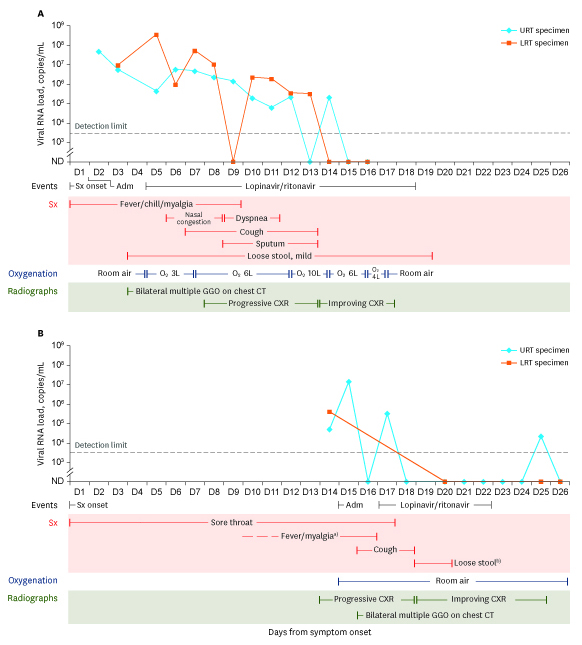People infected by new coronavirus tend to show strong contagiousness at an early stage of showing symptoms, and Korean patients are no exceptions, a recent study has found.
The viral load was highest during the early phase of the infection and started to decrease, according to the study on first and second patients, jointly conducted by Korean Medical Science, Incheon Medical Center, Samsung Medical Center, National Medical Center, and the Korea Centers for Disease Control and Prevention.
The researchers collected samples from the upper respiratory tract (URT) and lower respiratory tract (LRT) specimens from the first and second new coronavirus patients every day. They also collected serum, plasma, urine, and stool samples, and used real-time reverse transcriptase-polymerase chain reaction (rRT-PCR) to detect the virus.
From the analysis, the researchers found unique patterns of COVID-19 different from other coronaviruses.
In the first patient, a 35-year-old Chinese female, the virus was detected from LRT samples even before developing LRT symptoms, or visible infiltration showed in chest x-ray (CXR) by the end of the first week. Also, the viral load was similar in both URT and LRT specimen, unlike the Middle East Respiratory Syndrome, which showed higher concentration in LRT. Moreover, a low concentration of genetic materials was found in stool and urine, but it was not enough to be a positive response to the test.

The hospital discharged her on Feb. 6 after her symptoms, oxygen requirement, and CXR findings significantly improved from day 17 of symptom onset.
The researchers also found a visible infiltration on CXR at the end of the second week from the second patient, a 55-year-old Korean male. Also, the virus was detected in both URT and LRT samples, even though the patient only had mild symptoms by the end of the second week from symptoms appearance.
The second patient showed similar or more viral load in URT than LRT, and the virus lingered longer in URT. The researchers allegedly reasoned that the second patient lacked coughing due to mild symptoms.
The second patient's CXR improved after 19 days from symptoms development and was discharged on Feb 5.
"The highest viral load showed during the early period of infection and started to decrease by the time when the virus infiltration was visible on CXR, and this may have a significant implication on an optimal period for treatment to prevent the patient's condition from worsening," the research said.
The study was published Journal of Korean Medical Science with the title of "Viral Load Kinetics of SARS-CoV-2 Infection in First Two Patients in Korea."

